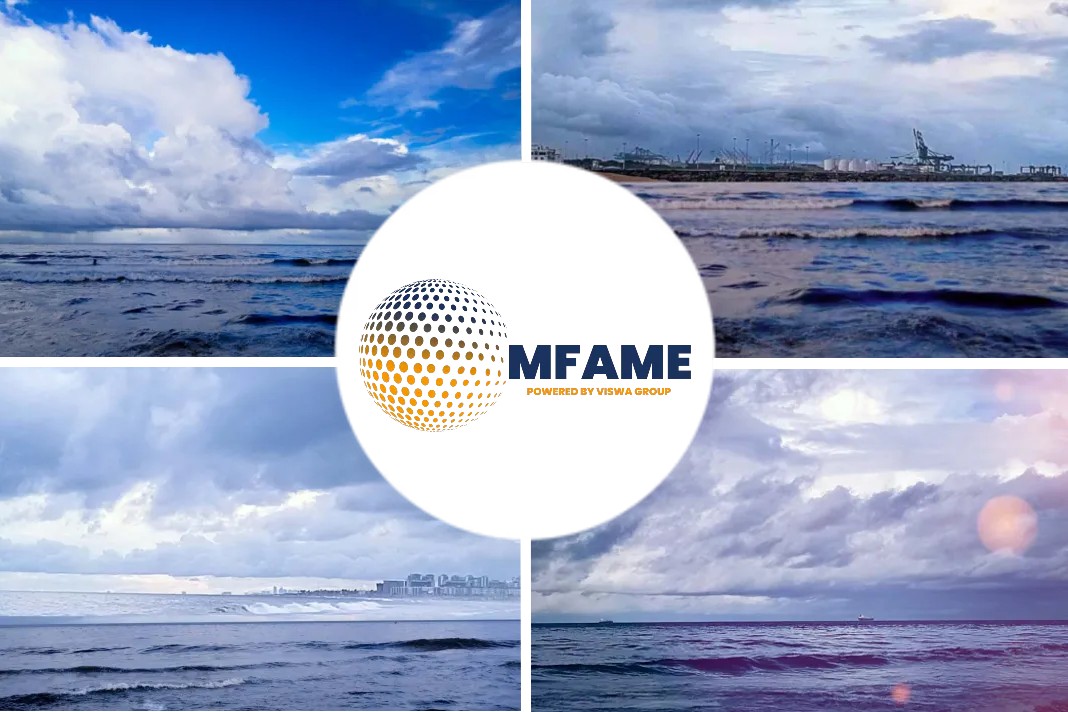Navigation locks installed along inland waterways can serve the combined purpose of a control dam as well as allowing vessels to transit between different elevations of waterway. While the energy sector has developed gigantic inflatable plastic bags for energy storage, the technology can be adapted to operate as submerged navigation locks.
Introduction
Weather conditions that have change the amount of precipitation in a given watershed region have also affected navigation along inland waterways. On sections of the Mississippi system, too much water and too high water levels has on occasion led to the suspension of commercial waterway navigation. When water levels are low, vessels are required to rail at part-load and with significant increases in transportation cost per container or per ton of bulk freight.
Over 1,000 years ago, the hydraulic engineers of the Mayan Empire developed a method to assure moderate and steady water flow at the lower elevations of rivers. Some highland watershed regions of their empire received generous rainfall that resulted in downstream flooding of fertile land. They built a series of rock dams at high elevation, along the tributaries of major rivers that at lower elevation, flowed through their agricultural areas. The result was the cessation of seasonal flooding of the lowland areas, with greatly extended periods of more steady and more constant water flow.
The development of giant inflatable plastic bags that can be anchored to a river floor provides a method by which to regulate water flow along navigable waterways, to assure sufficient navigation depth.
Candidate Waterway
There may be scope to install submerged and inflatable “navigation locks” at several locations along the waterway that connects North America’s Upper Great Lakes to the Atlantic Ocean. The main purpose of installing such technology would be to periodically reduce the volume flow rate of water at selected locations. During early 2017, water levels had risen to record levels in Lake Ontario and threatened to temporarily suspend shipping along the Seaway. At the same time, water levels in the Upper Great Lakes were regarded as being lower than the long-term seasonal average.
There are two locations on the Upper Great Lakes where submerged, supersized, water inflatable bags could be installed to reduce channel cross sectional area and in turn reduce the volume flow rate of water flowing downstream. The western most location would be the narrow channel between Lake Michigan and Lake Huron at Strait of Mackinac Bridge, with the second location being at the exit of Lake Huron and entrance into the St Clair River upstream and downstream of the Bluewater Bridge, to periodically reduce overnight winter time water flow rate to below 100,000 cfs.
Niagara Power Generation
While ship transport along the St Lawrence Seaway and on the Upper Great Lakes is suspended during the winter months, demand for electric power is also as a season low. Peak demand for electric power occurs during the summer months when ample navigation depth is required for shipping and Niagara Falls tourist region enjoys a peak of tourist and visitor traffic. A control dam is located upstream of Niagara Falls and during the wintertime off-peak season, can greatly reduce the volume of water that would otherwise flow over Niagara Falls.
Outside of the overnight off-peak period, the hydroelectric power stations require a daytime peak water volume flowrate of 110,000 cfs. During winter while demand for electric power is at a seasonal low, thermal power stations located around the Upper Great Lakes could provide much of the electric power, with hydroelectric power dams supplementing the market demand. Also during winter, the use of water flow rate reduction upstream of Niagara Falls during winter could assure ample water for peak summer time hydroelectric power generation at several locations along the Seaway between Lake Erie and Montreal.
Lower St Lawrence River
There appears to be scope to install pumped inflatable bags at two locations along the Lower St Lawrence River, outside of the ship navigation channel between the piers of the bridges at Three Rivers and at Quebec City. The main objective would be to reduce total channel cross-sectional area at these locations, to reduce water volume flow rate to assure navigation depth between Port of Montreal and the Gulf of St Lawrence. The shallow section of the river is located upstream of Quebec City. A minor increase in navigation depth could allow for additional containers aboard container ships.
A combination of upstream and downstream submerged inflatable bags spread a few nautical miles apart, could function like navigation locks. As a ship approaches, the closest bag would be deflated to a depth below the ship keel. As the ship stern clears the bag, it would be pumped to capacity as the companion bag is deflated to below the depth of the ship keel. On the Lower St Lawrence River, while there could be continual pumping and deflating of water-pumped inflatable bags, such an installation could be viable based on additional containers carried aboard ships.
Conclusions
- The waterway between Lake Erie and the Lower St Lawrence River sustains both vessel navigation as well as hydroelectric power generation.
- During Summer, the combination of peak maritime traffic, peak electric power demand and peak tourist season at Niagara Falls all occur simultaneously.
- During winter, the combination of minimal Niagara tourism, minimal commercial maritime operation and minimal season electric power demand all occur simultaneously.
- During winter and especially during the overnight hours, there is scope to reduce water volume flowrate from Lake Michigan into Lake Huron and from Lake Huron into the St Clair River Pumped, water-inflatable super-size plastic bags may be installed at numerous locations along the waterway between the Upper Great Lakes and Gulf of St Lawrence.
- On the Lower St Lawrence River, inflatable bags installed at strategic locations could increase navigation depth and allow container ships to carry additional containers per voyage, to and from Port of Montreal.
Did you subscribe for our daily newsletter?
It’s Free! Click here to Subscribe!
Source: Maritime Executive






















